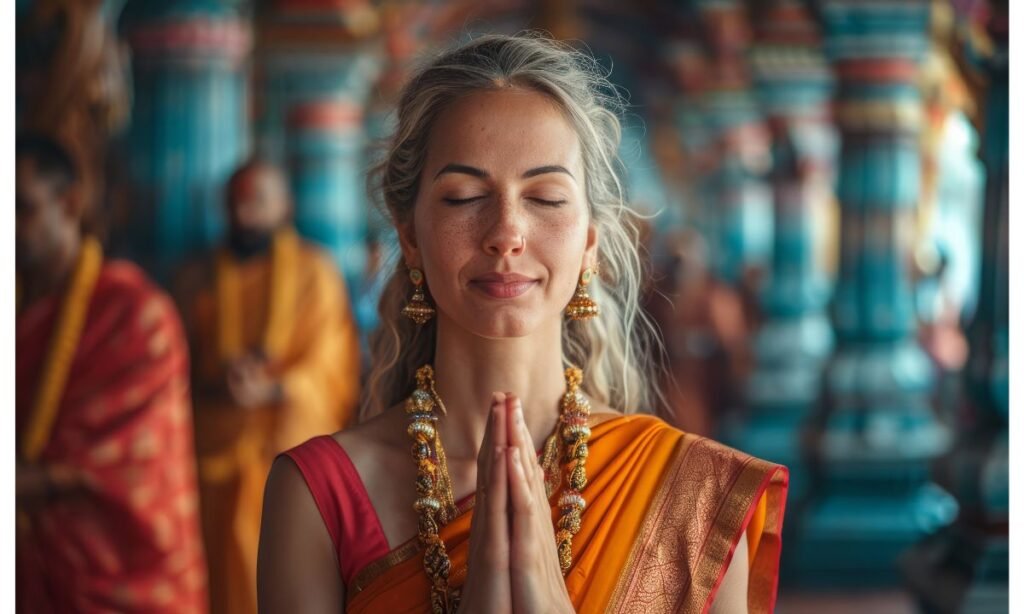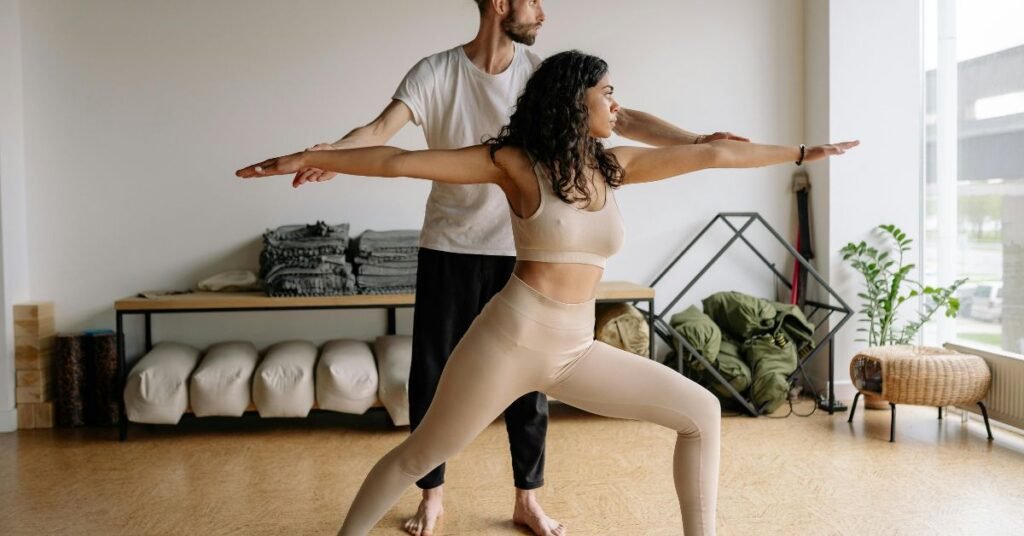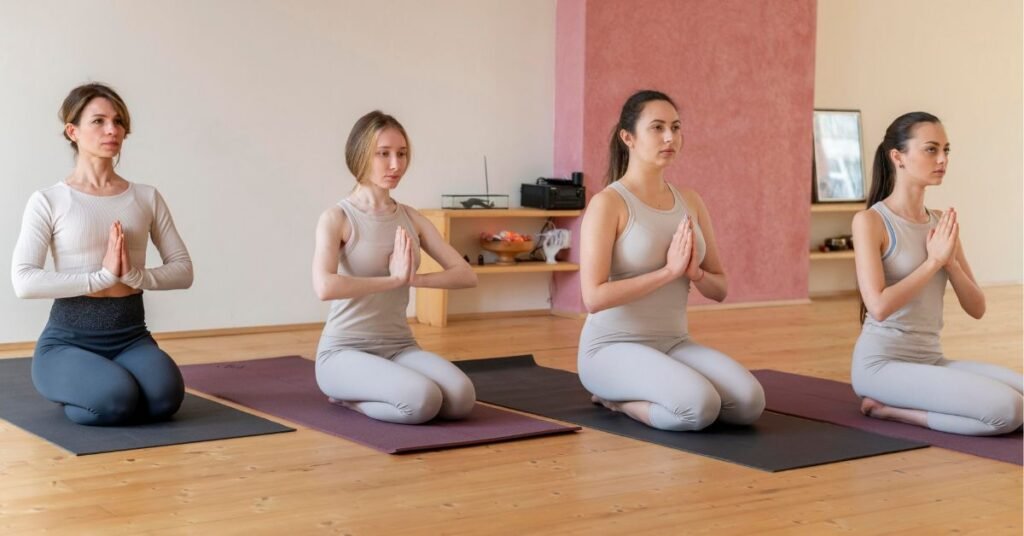Introduction
How is yoga associated with India? This is a question many people ask when they begin their journey into the world of yoga. Yoga is not just a set of exercises or a fitness trend—it is a way of life deeply rooted in Indian culture for thousands of years. From ancient scriptures to modern-day practices, yoga has shaped India’s spiritual and cultural landscape. In this blog post, we will explore the deep connection between yoga and Indian culture, its origins, evolution, and why it continues to be an essential part of India’s identity.
The Origins of Yoga in India
Yoga finds its roots in India, dating back more than 5,000 years. It is believed to have originated from the Indus Valley Civilization, one of the world’s oldest civilizations. The earliest mention of yoga is found in the ancient Hindu scriptures known as the Vedas. These texts contain hymns, rituals, and philosophies that laid the foundation for yoga.
The Role of Ancient Texts in Yoga
- The Vedas – The oldest scriptures of Hinduism, which include references to meditation and breath control.
- The Upanishads – These spiritual texts delve deeper into the philosophy of self-realization, emphasizing the practice of yoga as a path to enlightenment.
- The Bhagavad Gita – One of the most famous Hindu scriptures, where Lord Krishna discusses yoga in three forms: Karma Yoga (yoga of action), Bhakti Yoga (yoga of devotion), and Jnana Yoga (yoga of knowledge).
- The Yoga Sutras of Patanjali – A foundational text written by the sage Patanjali, outlining the eight limbs of yoga that form the basis of modern yoga practice.
The Spiritual Significance of Yoga in Indian Culture
Yoga is not just about physical postures; it is a spiritual practice deeply intertwined with Indian culture. In India, yoga is considered a path to self-discovery and inner peace. The practice is closely linked to Hinduism, Buddhism, and Jainism, all emphasizing meditation and mindfulness.
The Eight Limbs of Yoga
The Yoga Sutras of Patanjali defines yoga as an eightfold path, known as the Ashtanga Yoga, which includes:
- Yama – Ethical principles like truthfulness and non-violence.
- Niyama – Personal disciplines like cleanliness and self-discipline.
- Asana – Physical postures (what most people associate with yoga today).
- Pranayama – Breath control techniques.
- Pratyahara – Withdrawal of the senses from distractions.
- Dharana – Concentration and focus.
- Dhyana – Meditation.
- Samadhi – A state of ultimate bliss and enlightenment.
Each of these limbs plays a vital role in achieving a balanced life, emphasizing self-awareness, self-discipline, and spiritual growth.
Readmore: Exploring Different Types of Yoga
Readmore: 5 Amazing Reasons to Try Hot Yoga
Yoga in Daily Indian Life
In India, yoga is not just a practice; it is a way of life. It is woven into daily routines, festivals, and traditions.
Yoga and Ayurveda
Yoga is closely connected to Ayurveda, the ancient Indian system of medicine. Ayurveda emphasizes a holistic approach to health, focusing on balancing the body, mind, and spirit. Yogic practices, along with Ayurvedic diets, help maintain overall well-being.
Yoga and Indian Festivals
Many Indian festivals involve yoga and meditation. For example:
- International Yoga Day (June 21st) – Recognized globally but originated in India to promote yoga’s benefits.
- Diwali (Festival of Lights) – People practice meditation and yoga to cleanse the mind and soul.
- Makar Sankranti – Celebrated with Surya Namaskar (Sun Salutations) to honor the sun.
Yoga in Indian Temples and Ashrams
Ashrams (spiritual retreats) across India offer yoga and meditation programs for seekers from around the world. Places like Rishikesh, Varanasi, and Kerala are renowned for their yoga schools and retreats, attracting thousands of yoga enthusiasts each year.
The Global Influence of Indian Yoga
While yoga originated in India, its impact has spread worldwide. Today, millions of people practice yoga in different forms—Hatha Yoga, Vinyasa Yoga, Kundalini Yoga, and more.
How India Preserves the Authenticity of Yoga
- Traditional Gurus and Schools – India is home to renowned yoga teachers like Swami Vivekananda, B.K.S. Iyengar, and Paramahansa Yogananda, who have shaped modern yoga.
- Government Initiatives – India has established institutions like the Ministry of AYUSH to promote authentic yoga teachings.
- Yoga Tourism – Thousands of international tourists visit India each year to learn yoga from its birthplace.
Readmore: Wild Thing Pose Guide (Camatkarasana)
Readmore: Bound Angle Pose (Baddha Konasana)
The Modern-Day Relevance of Yoga in India
Even in the fast-paced modern world, yoga remains deeply embedded in Indian culture. With increasing stress levels and health concerns, more Indians are turning to yoga for mental and physical well-being.
Why Yoga is More Relevant Than Ever
- Mental Health Benefits – Reduces anxiety, depression, and stress.
- Physical Health Benefits – Improves flexibility, strength, and immunity.
- Spiritual Growth – Helps individuals connect with their inner selves.
Conclusion
So, how is yoga associated with India? Yoga is the heart and soul of Indian culture. It is a spiritual discipline, a path to self-discovery, and a gift from India to the world. Whether you are practicing yoga for fitness, mental clarity, or spiritual enlightenment, remember that every posture, every breath, and every meditation session connects you to an ancient tradition that has been shaping lives for thousands of years.
India remains the torchbearer of yoga, preserving its authenticity while sharing its wisdom with the world. If you ever get the chance, visiting India to experience yoga in its birthplace is a journey worth taking!
FAQs
Q1. What is the origin of yoga?
Yoga originated in India over 5,000 years ago and is mentioned in ancient scriptures like the Vedas and the Upanishads.
Q2. Why is yoga important in Indian culture?
Yoga is deeply rooted in Indian spirituality. It helps individuals achieve the balance between the mind, body, and soul.
Q3. How does yoga differ from physical exercise?
Unlike regular exercise, yoga incorporates meditation, breath control, and mindfulness for overall well-being.
Q4. Where can I learn authentic yoga in India?
Rishikesh, Kerala, and Varanasi are some of the best places in India to learn yoga from authentic schools and ashrams.
Q5. Is yoga only for Hindus?
No, yoga is a universal practice that can be followed by anyone, regardless of religion or background.
Readmore: Yoga Poses for Kids: Fun, Easy, and Healthy
Final Thought
Next time you roll out your yoga mat, take a moment to appreciate the rich history and culture behind this practice. After all, yoga is more than just exercise—it’s a way of life! Namaste. 🙏

Sonu is a passionate yoga teacher with over 6+ years of experience helping individuals find balance, strength, and inner peace through the transformative power of yoga. As the creator of Pure Yoga Vibes, Sonu shares expert insights, inspiring practices, and a wealth of knowledge to support your wellness journey. Dedicated to creating a space for growth and mindfulness, Sonu’s mission is to make yoga accessible and enjoyable for everyone. For inquiries or collaborations, feel free to reach out at contact@pureyogavibes.com.



